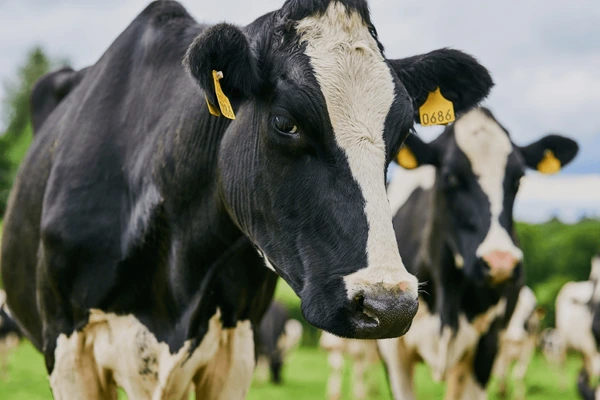Why TZ cattle electronic ear tagging a great leap forward

DAR ES SALAAM: VISUAL Digitalised Ear Tags technology on cattle is an essential service that is carried out in the country at which all information about the cattle are stored in the Government Portal.
These tags, often combined with visual tags, store unique identification numbers that can be read remotely by specific readers. This technology facilitates improved record-keeping, disease tracking and participation in verified programmes.
Mr Shanel Ngowi, the Managing Director (MD) of S and J Animal Tech Company Limited that produces the electronic ear tags in Dar es Salaam says electronic ear tagging of cattle in Tanzania is part of a broader effort to enhance livestock identification, registration and traceability, aiming to improve disease control, enhance food safety and boost market access.
Kudos to the Government through the Ministry of Livestock and Fisheries for coming up with such creativity, competitive and affordable technologies.
The S and J Animal Company Limited also has done a commendable job of producing the ear tags that are supplied to district councils across the country, something that is bearing fruits in identification of the livestock available in the country.
If the truth be told, digitisation of livestock’s’ information not only shall attract investors , but also the young learned men and women shall get involved in the industry since data and several other information needed shall easily be reached out.
“This system, known as TANLITS (a web-based system developed to operationalise the Livestock Identification, Registration and Traceability), utilises electronic ear tags to track individual animals, allowing for efficient monitoring of vaccinations, disease outbreaks and livestock movements,” said Mr Ngowi in his office recently.
In Tanzania, the exercise of using electronic ear tags for cattle is aimed at improving livestock identification and traceability. We commend the government for all it has done to ensure this is a success.
Mr Ngowi noted that the government has been working to implement this system nationwide, but it has faced some challenges, including low registration rates and suspension of the exercise for assessment.
The goal is to eventually have a high percentage of cattle tagged with electronic identification (EID) tags to aid in tracking and managing the national herd. Purpose of Electronic Ear Tagging include to have improved identification and traceability.
The MD said that electronic ear tags contain a unique RFID (Radio Frequency Identification) microchip that allows for automatic identification and recording of animal information.
This enables tracking of animals from farm to market and across borders, which is crucial for disease control and trade.
Mr Ngowi said there is an issue of herd management: EID tags help farmers keep accurate records, manage their herds more effectively and make informed decisions for herd improvement.
Compliance with regulations is another important issue: In some regions, electronic ear tags are required for cattle participating in shows, exhibitions, or events.
Future outlook seems fine as there is an increased adoption. Despite initial challenges, there is a push to increase the adoption of electronic ear tags in Tanzania to improve livestock management and traceability.
As for the National Identification System, Mr Ngowi said the goal is to establish a robust national livestock identification system using electronic ear tags to enhance the overall livestock sector.
There is an issue of key benefits include improved traceability: EID systems enable efficient tracking of individual animals, which is crucial for disease outbreak management and participation in traceability programmes.
ALSO READ: 2000 donkeys stolen from Tanzania are smuggled into Kenya annually
“Enhanced record keeping is another one, whereby data like birth date, sex, parentage, weight and health history can be linked to the unique tag ID, streamlining farm management.
“Efficient management: EID systems allow for automated data collection and analysis, leading to more efficient management practices and potentially increased productivity,” said the MD.
Disease detection is another benefit. Some advanced EID tags can monitor vital signs and detect early signs of illness, helping farmers identify sick animals quickly.
Visual tags are used in conjunction with electronic tags and provide a visual identifier for the animal, making it easy to locate and identify.
Earlier on, it was reported that Tanzania was working to transform traditional livestock keeping into modern livestock keeping by staging a feedlot and livestock Traceability System (TANLITS) that would foster red meat in the export market.
Ministry of Livestock and Fisheries Director of Research, Training and Extension, Mr Angello Mwilawa said then that the ministry had set up various research and training centres to groom young graduates to adopt the system of a feedlot that goes hand in hand with government’s efforts in introducing TANLITS.
“The government wants to revolutionise this livestock sector to become more competitive and attract more young graduates to utilise existing opportunities in the global market because there is demand for red meat,” he was quoted as saying.
He explained that the ministry had so far eight training and research centres of incubators – three in Tanga, three in Mwanza, Misungwi and two in Karagwe and had a total number of 240 young graduates from Livestock Training Agents and Sokoine University of Agriculture (SUA).
Mr Mwilawa stressed that taking into consideration the position of the country, the livestock feedlot system was going to be a game changer for the growth of the sector in terms of GDP.
“In fact, the government has financed these young graduates to develop their skills by feeding cattle and looking for the market in fish processing industries in the country. This programme will eventually shine in the global market if stakeholders in the sector agree to utilise TANLITS,” he noted.
In an exclusive interview in Dar es Salaam, S and J Animal Tech Company Managing Director (MD), Mr Shanel Ngowi said this move will not only modernise the sector, but would also place the country in the global meat market.
“We want to bring the value of red meat to the world market by implementing this system that will revamp, restructure and foster the livestock sector to have international standards,” he said.
Mr Ngowi added that they were eyeing to sell more quality red meat in the export market if stakeholders in the country would government efforts in implementing effectively a two-strategy system.
He further said that the new method of identification of livestock in the country would strengthen the availability of statistics and put an end to cattle theft and introduce the country to the world meat market






How much is tech ear tags
645252 434229I always was interested in this subject and still am, regards for posting . 670651